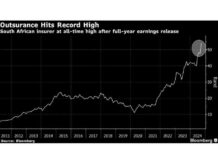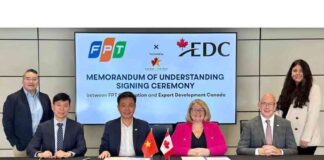The workforce landscape in Great Britain is evolving rapidly, with a significant increase in the number of organizations embracing a multigenerational workforce. A recent report by the Work Foundation at Lancaster University, in partnership with the International Alliance for Responsible Drinking (IARD), sheds light on the benefits and challenges associated with managing multiple generations in the workplace.
The study highlights that nearly three-quarters of senior business leaders in Great Britain currently have employees spanning different generations within their organizations. This trend is attributed to the aging population and the extension of working lives, resulting in a diverse mix of workers from various age groups. For the first time in history, workplaces are now accommodating four generations, ranging from those born in the 1950s and 1960s to individuals born in the 2000s.
Benefits of Multigenerational Workforce
The presence of multiple generations in the workforce presents unique opportunities for both employers and employees. According to a survey of over 1,000 senior British business leaders conducted by Survation in May 2024, more than half of employers acknowledge having more than one generation in their organization. Furthermore, seven in ten senior business leaders agree that their organizations benefit from the diverse perspectives brought by a multigenerational workforce.
Millennials, individuals aged late 20s to mid-40s, are identified as the most dominant generation in today’s workplaces. This demographic shift reflects the changing dynamics of the workforce and the need for organizations to adapt to the preferences and values of different age groups.
Challenges in Managing Multigenerational Workforce
Despite the advantages of a multigenerational workforce, there are significant differences in work culture preferences among employees from different generations. A majority of employers (61%) acknowledge these disparities, leading to challenges in communication and collaboration within teams. This highlights the importance of understanding and addressing the unique needs and expectations of employees across different age groups.
The study also reveals a growing consensus that the perceived difficulties in managing a multigenerational workforce may be overstated. Instead, the focus should be on identifying common ground and leveraging the strengths of each generation to foster a more inclusive and productive work environment.
Addressing Gaps in Managing Multigenerational Workforce
While employers recognize the benefits of a diverse workforce, there is a notable gap in implementing age-friendly policies and support mechanisms. Ben Harrison, Director of the Work Foundation at Lancaster University, emphasizes the need for organizations to prioritize health and wellbeing by introducing age-inclusive policies and long-term workforce planning.
The research highlights an ’employer say-do-gap’ in terms of age-inclusive policies in the workplace. Despite the importance of diversity and inclusion in creating a positive work culture for a multigenerational workforce, only a small percentage of organizations have specific policies addressing age-related issues such as menopause support and alcohol consumption.
Recommendations for Managing Multigenerational Workforce
To effectively navigate the challenges of a multigenerational workforce, the Work Foundation proposes several recommendations for employers:
Develop proactive and long-term policy planning to support line managers and workers.
Implement age-inclusive policies to unlock the benefits of a multigenerational workforce.
Provide lifelong learning opportunities for all staff to support their career growth.
Embrace flexible working arrangements to accommodate different preferences and needs.
Develop policies and procedures that promote inclusion, diversity, and choice within the organization.
By embracing these recommendations, organizations can create a more inclusive and supportive environment that maximizes the opportunities of a multigenerational workforce.
Conclusion
In conclusion, the increasing diversity of age groups in the workforce presents both challenges and opportunities for organizations in Great Britain. By understanding the unique perspectives and preferences of different generations, employers can leverage the strengths of a multigenerational workforce to drive innovation, collaboration, and productivity.
As the workforce continues to evolve, it is essential for organizations to prioritize age-inclusive policies, lifelong learning opportunities, and flexible working arrangements to support the diverse needs of employees across different generations. By fostering a culture of inclusion, diversity, and choice, organizations can create a more resilient and adaptable workforce that is prepared to meet the demands of the future.






















